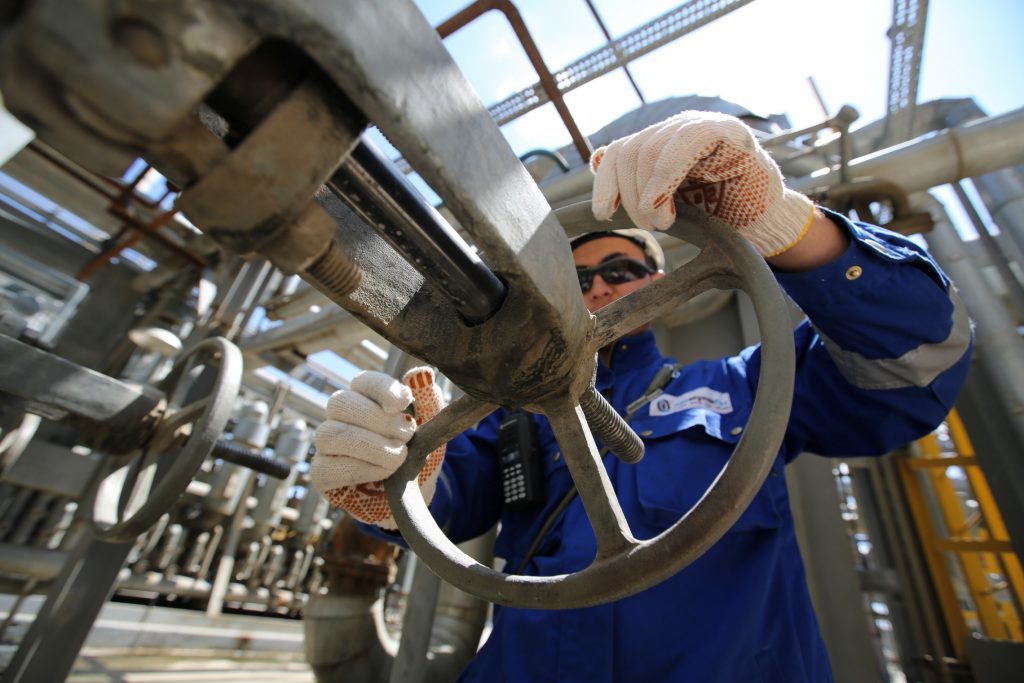
Kazakhstan, the second-largest active member of the Opec+ group after Russia, has just announced an ambitious five-year expansion plan for its petroleum sector.
The Central Asian nation’s strategy has the potential to raise its prominence in the exporters’ group and strengthen its domestic energy security, all while challenging other producers to meet new standards of excellence.
To succeed, key players within the industry, including both oil majors and mid-sized regional companies, must bolster investment in advanced technologies, with a determined focus on maximising existing resources and mitigating environmental impacts.
Kazakhstan sits at the nexus of global oil and gas pipelines, including tanker routes that unite the region – north and west through Russia, across the Caspian Sea to Europe, and east to China. On balance, it has an unusually diverse petroleum sector, which features a large state-owned oil company, KazMunayGas (KMG). There are also numerous smaller private Kazakh companies such as Kazpetrol Group, an innovative enterprise owned by Yerkin Tatishev. Foreign international corporations are also well represented, notably Shell, Eni, Chevron, ExxonMobil, CNPC, Lukoil and others.
The new strategy, unveiled on December 6, aims to further transform the country’s position in the energy landscape, and calls for $37.3 billion in spending to cover 20 major projects in oil and gas production, refining and petrochemicals.
Under the plan, the three leading fields, Kashagan, Tengiz and Karachaganak, operated by international consortia featuring KMG and others, will be expanded. This is expected to take national production from 1.769 million bpd in 2022 and a projected 1.85mn bpd this year to 105.5 million tonnes in 2027 (about 2.11mn bpd).
Refinery capacity is also expected to increase by about a quarter, or 120,000 bpd, with the enlargement of the Shymkent facility. Moreover, the important Kenkiyak-Atyrau and Kenkiyak-Kumkol oil pipelines will be expanded, helping to supply oil from western Kazakhstan to domestic refineries and via pipeline to China.
However, without new discoveries, Kazakh production is projected to peak around 2030. Therefore, the strategy places significant emphasis on new developments and exploration. Most notably, the Lukoil-operated Kalamkas More and Khazar fields in the Caspian Sea will be further developed.
Exploration will be intensified, including in deep subsalt formations in the Caspian and South Turgai basins. Added to that, the latest auctions for new fields in October and December 2023 attracted strong interest from local players. Within this, the increasing maturity of older Soviet-era fields, such as the Mangistau and Kyzylorda regions, demand improved recovery rates and reduced operating costs, which can be best achieved through the efforts of focused, smaller companies.
Kazakhstan’s decision to concentrate attention and resources on domestic oil and gas capacity fits within a larger pattern, as the fall-out from Russia’s invasion of Ukraine in February 2022 has led to a rethink of energy policy in Astana.
Export plans
Most oil exports today travel via the CPC pipeline through Russia, or Russia’s national pipeline system, Transneft, to Novorossiysk and on to the Black Sea. This route however has suffered a number of weather-related outages and, more recently, Ukrainian attacks on Russian warships, tankers and refineries.
In response, Kazakhstan launched a new export grade to distinguish its crude from sanctioned Russian oil, and has begun buying tankers to shuttle exports across the Caspian Sea to the Baku-Tbilisi-Ceyhan (BTC) pipeline.
Exports to China could rise from just 1 million tonnes this year (about 20,000 bpd) to 130,000 bpd. Along with the expansion of Shymkent, that would be enough to handle most of the increased output by 2027.
These initiatives make Kazakhstan one of relatively few countries in the world able to attract strong investment interest both from international oil companies and local players.
To maintain that attractiveness, improving environmental performance is imperative, and the government has worked with industry to make the necessary adjustments. Levels of gas flaring have dropped sharply from 3.8 billion cubic metres in 2014 to 1 bcm last year.
At the just-concluded COP28 climate conference in Dubai, KMG was one of 30 national oil companies to sign up to the Oil and Gas Decarbonisation Charter (OGDC), which commits them to reach net-zero operational emissions by 2050, and eliminate routine flaring and nearly all methane emissions by 2030.
Two Kazakh companies, KMG and the aforementioned Kazpetrol, have endorsed the World Bank’s initiative for zero routine flaring by 2030. Kazpetrol already uses 97-98% of its associated gas, according to technical director Talgat Abibullaev.
Technical talk
Realising this vision also means confronting Kazakhstan’s many technical challenges. These include deep, ultra-sour reservoirs, environmentally sensitive shallow waters of the Caspian, complex sub-salt imaging, heavy oil, and mature fields.
Kazpetrol, which is enjoying rapid growth in the region, has chosen to pioneer the smart-field concept in Kazakhstan, drawing inspiration from Shell and Chevron. All of its 120 wells will be equipped with sensors. Digitalisation is expected to save about 15% of operating costs, reserves have increased 7% and gas usage dropped 10%.
The company thinks such innovations could double reserves at many fields. If such a dramatic increase could be replicated more widely, digitalisation could be a crucial boost to Kazakhstan’s 2027 ambition.
As the country prepares to undergo a historic expansion, aligning technology, investment and environmental principles will further boost its profile on a global scale and within the OPEC+ alliance – helpful as a reshuffling of quotas looms.
Robin M. Mills is CEO of Qamar Energy, and author of The Myth of the Oil Crisis